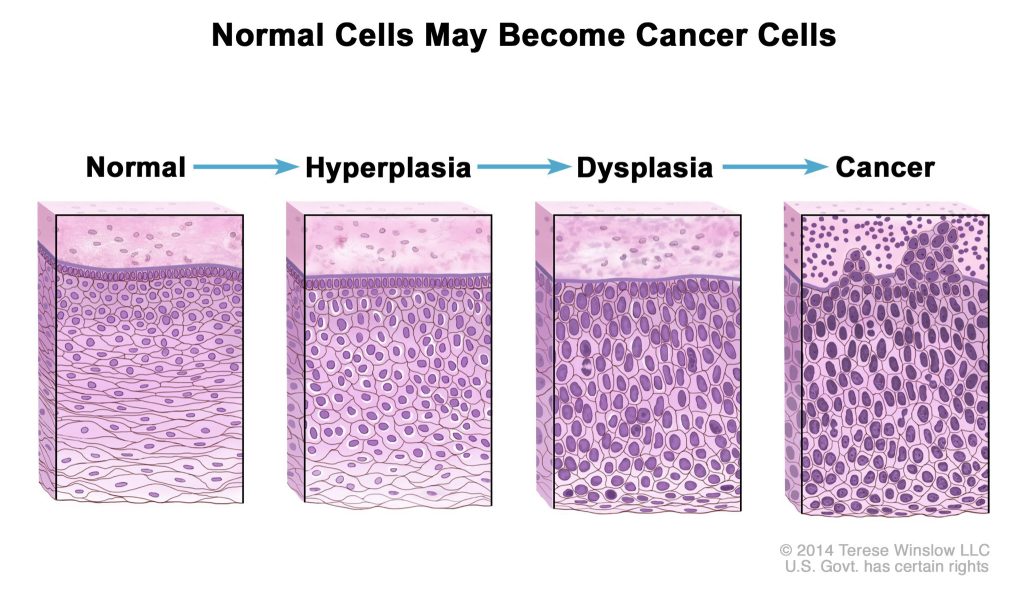Thymic cancer is a cancer of the thymus gland or thymic tissue.
The thymus gland is in the upper part of the mediastinum (chest) behind the sternum and extending upwards into the root of the neck. It is a small organ (reaching its maximum weight of about 1 ounce during puberty) that slowly decreases in size during adulthood and is gradually replaced by fat tissue. During fetal development and childhood, the thymus produces white blood cells, called lymphocytes, that travel to lymph nodes (bean-sized collections of immune system cells) throughout the body. There they help the immune system protect the body from infections.
The thymus contains two types of cells: epithelial cells and lymphocytes. Thymic epithelial cells are the cells that line the thymus, and are the origin cells of thymoma and thymic carcinoma. If lymphocytes become malignant (cancerous), they can develop into lymphoma.
The outside that surrounds the thymus is called the capsule. You’ll learn why this is important soon.
Other Thymic Conditions
Thymic cysts are benign, rare and usually asymptomatic. Sometimes they are difficult to distinguish them from solid thymus tumors using scans. Many surgeons advocate early surgical removal of the cyst because complications, such as aggravation or rupture of the cysts, malignant transformation or compression of the surrounding organs in the mediastinum, may occur.
Thymic hyperplasia is an enlarged thymus due to an increase in the number of thymic epithelial cells. More prevalent among children and young adults, this is not associated with autoimmune disease. Under a microscope, the cells look like normal cells.
Thymic dysplasia is also an enlarged thymus. But in this case, the cells appear abnormal. While it is not cancer, it can transform into cancer at a later time.

If You Want to Learn More
The lymphatic system is made up of thin vessels that branch out to all parts of the body. These vessels carry lymph. Lymph is a colorless fluid that carries away waste and transports a type of white blood cell called lymphocytes. Lymphocytes fight germs throughout the body.
- B-lymphocytes make antibodies to fight bacteria. They may also be called B cells.
- T-lymphocytes destroy foreign cells and trigger the B cells to make antibodies. They are also called T cells.
Within the lymphatic system, there are several other structures:
- Lymph nodes, which are tiny, bean-shaped organs that filter the lymph fluid. They are found in clusters in the neck, underarms, abdomen, pelvis, and groin. When bacteria get into the lymph nodes, they swell.
- The spleen, which makes lymphocytes and filters blood
- The tonsils, located in the throat